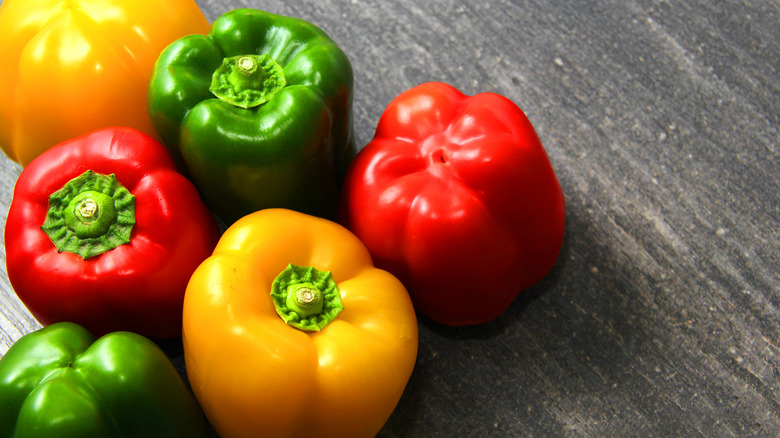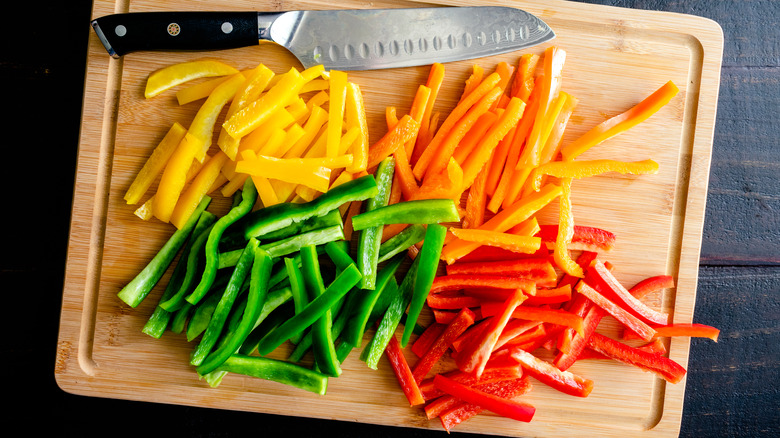The Step You Can Skip When Freezing Bell Peppers
The produce department is always a riot of colors, but the bell pepper section usually halts shoppers in their tracks. Perhaps it's the stoplight combination of red, yellow, and green, but if you're extra lucky, you might find orange, brown, white, black, or even purple bell peppers, according to Indiana Public Media.
How do peppers end up with all these lovely hues? Green bell peppers, the most common color we find, get their color from chlorophyll. While some green bell peppers retain their verdant color throughout their lifespan, many turn red as they ripen fully. Other varieties of bell pepper turn different colors as they mature. Orange bell peppers, for example, derive their color from the same chemical compound in carrots, beta carotene. And Ark Foods tells us that purple bell peppers get their color from anthocyanins, the same chemical compound that colors blueberries, per Chem Ed Xchange.
Once you bring home your lovely bell peppers, the clock is running — produce never stays fresh forever. You can certainly extend the life of your peppers by keeping them in a cool spot on the counter or in the refrigerator. But if you've purchased more than you can use in a short period, you may choose to freeze your bell peppers. And the good news is they're easy to freeze. There's a step you must include when freezing some vegetables, but it's not necessary for bell peppers.
What's the step you can skip?
Some vegetables, like broccoli, need to be blanched before freezing. Why do some vegetables need to be blanched for best results when freezing? The University of Minnesota explains that blanching stops the action of the enzymes that change the color, flavor, and texture of vegetables as they age. Bell peppers, according to Eating Well, don't need to be blanched before they're frozen, which makes it quick and easy to stock your freezer with peppers that will be ready to go for recipes for up to six months.
Prepping bell peppers for freezing is simple. Choose healthy, shiny, unblemished bell peppers. Wash them, remove the core, seeds, and membranes, and slice or chop them so they're prepped for future recipes. You can also freeze bell peppers for stuffed peppers by scooping out the membranes and seeds and freezing them whole. Place the peppers on a baking sheet, freeze for at least an hour, or until the peppers are frozen through, then put them into containers like freezer bags, labeled with your use-by date, which Eating Well recommends should be about six months for best results. Your frozen bell peppers won't stay as crisp as fresh ones, so they're better used for cooked recipes than recipes calling for raw bell peppers. If you're making a dish like our delicious stuffed pepper skillet meal, your frozen bell peppers will both extend the life of your produce and cut down on your dinner prep time.

